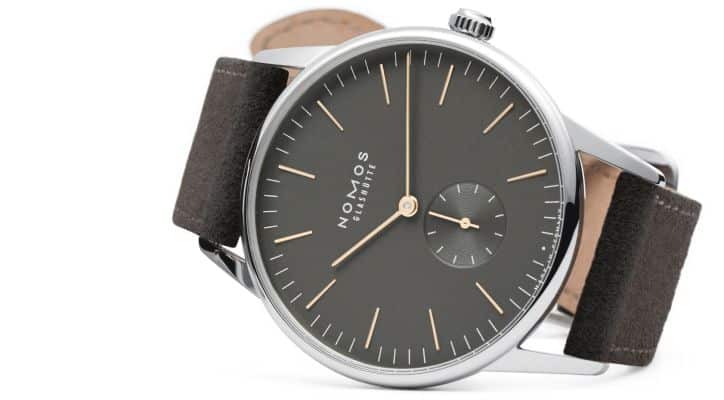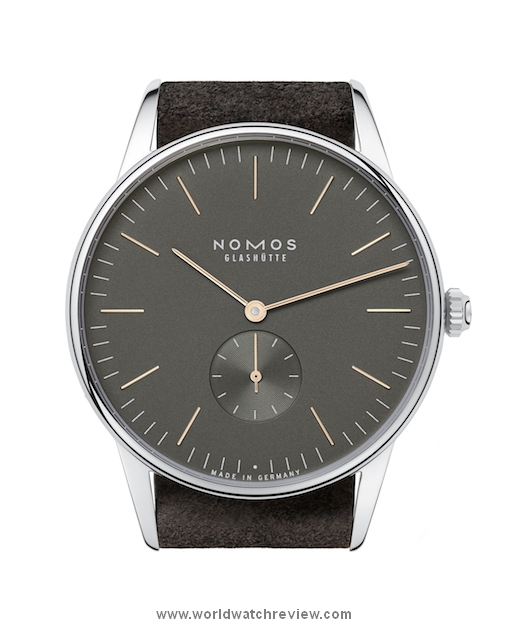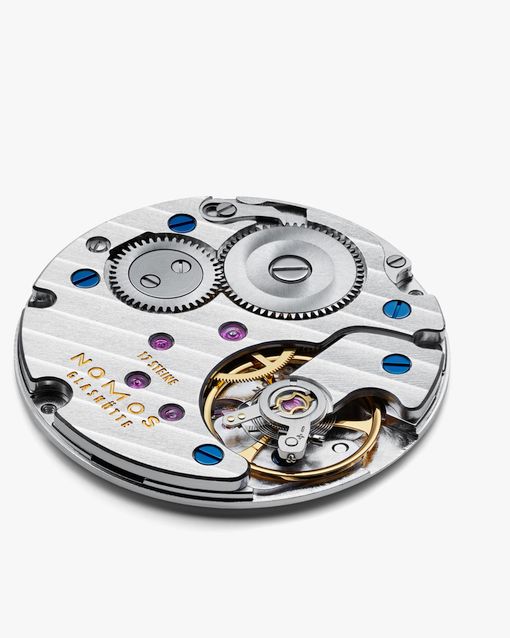
As the name implies, the limited-edition Nomos Orion 1989 Fall of the Berlin Wall celebrates the 25th anniversary of the fall of the wall that not only led to the reunification of Germany after more than four decades of Soviet occupation but actually marked the end of the communist era in Eastern and Central Europe.
Based on their current Bauhaus-inspired Orion collection, the new timepiece celebrates the 25th anniversary of the demolition of the ill-famed Berlin Wall that separated Eastern and Western parts of Germany divided after the end of WWII.
Built in the 1960s by the government of East Germany to stop local folks from fleeing the “communist paradise” in search of a better life and personal freedom, the wall has soon become a concrete (in both meanings of the word) symbol of a barrier that separated Central and Eastern European countries from the free world.
Turned into a heavily militarized, heavily policed buffer zone, the vast territories to the east of the Wall of Shame were full of people whose only hope was that someday the whole thing would collapse under the heavy burden of economic mismanagement, corruption, and lack of competitiveness.
When it finally happened back in November 1989, the demolition of the wall was, perhaps, the best thing that happened to Europe since D-Day.

As I have already noted, the watch is based on their Orion model, which basically means that you can have it both in classic 32.8 mm x 7.57 mm case or in a more modern, but still quite compact 38.00 mm x 8.86 mm size. Crafted from polished stainless steel, both versions of the watch usually look great even on smaller wrists, although you must understand that, to achieve the desired effect, you need to pair the gadget with an expensive business suit: something more casual just won’t cut it.
The mechanism that powers the watch is, too, the same well-known Nomos caliber Alpha hand-wound movement.

Extremely simple with its just 17 rubies and quite archaic with its frequency of only 21,600 vibrations per hour, the mechanism perfectly matches the visual simplicity of the watch with its usual rhodium-plating, Glashutte ribbing (basically, a local version of the famous Geneva Stripes), decorated ratchet and crown wheels, and, of course, a set of five blued and polished screw-heads.
The galvanized “November gray” dial serves as a perfect background for the hair-thin gold-plated hands and stamped hour markers that look especially contrasting against this texture. Yes, the elements of the dial lack any sort of luminous substance to make the Orion 1989 more readable at night, but that’s actually a part of the timekeeper’s charm.
Perhaps, the only thing that looks a bit out of place here is the dark gray velour strap, but that’s just a matter of personal taste.
I couldn’t find any information regarding the model’s price, but it will possibly be quite close to €1620 and €1540 that the German watchmaker charges for the 35 mm and 33 mm versions of the timekeeper respectively.
See also: Nomos for Wempe Weltzeit 5th Avenue
Photos: Nomos
WWR verdict
Originality 5/5
Build quality: 5/5
Usability: 5/5
Legibility: 4.5/5
Value for money: 4.5/5
Nomos Orion 1989 ‘Fall of the Berlin Wall’ specification
Price: €1840 (MSRP)
Movement: Hand-wound, Nomos caliber Alpha, Made in Germany
Number of jewels: 17
Movement frequency: 21,600 vph
Power reserve: 43 hours
Movement decoration: Glashutte three-quarter plate, vertical stripes, blued screws
Functions: Hours, minutes, small seconds
Case: Stainless steel
Shape: Round
Sizes: 38.00 mm / 33.00 mm
Case heights: 8.80 mm / 8.50 mm
Lug width: 19 mm or 17 mm
Dial: Galvanized “November gray”
Hour markers: Golden, stamped
Hands: Rose gold-plated
Water resistance: 30 meters
Strap: Dark gray velour leather strap with a steel buckle
Crystal: Sapphire
Back: Sapphire
